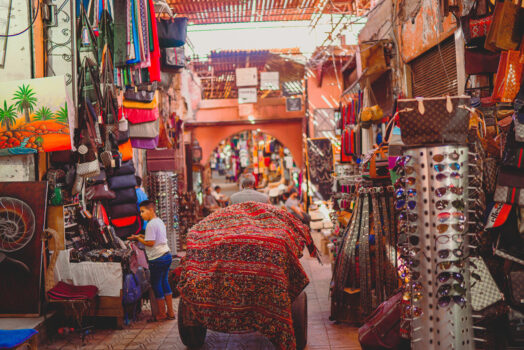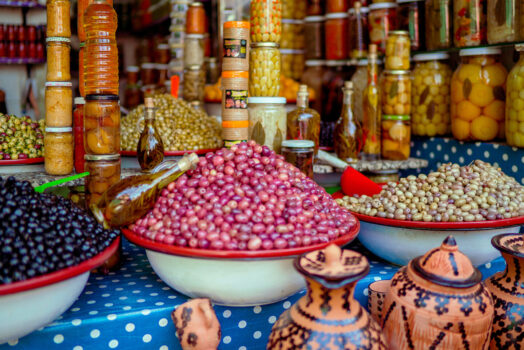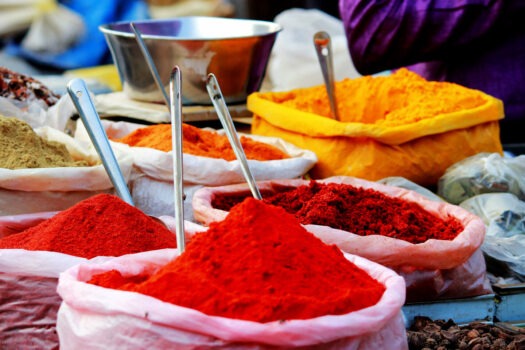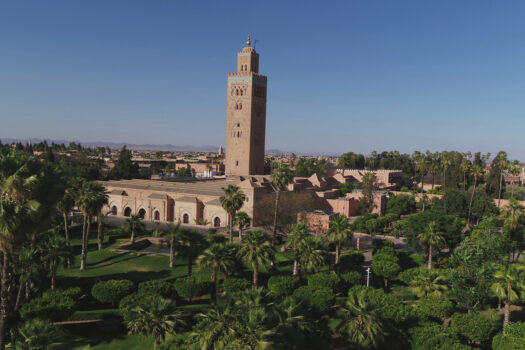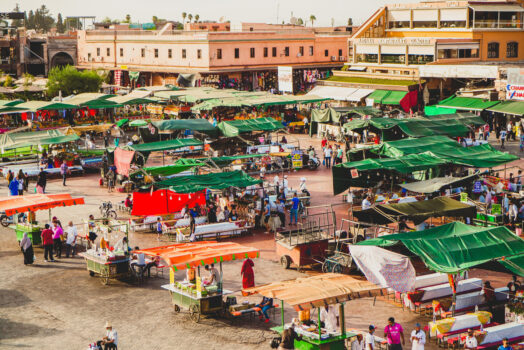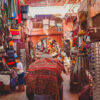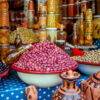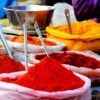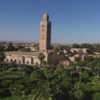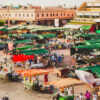Medinas of Morocco
For sheer diversity, Morocco is the perfect destination, so close to Europe, yet so completely different. Admire the variety of scenery and culture from the desert and mountains to the vibrant imperial cities and coast.
Read more
Dates
Dates on request
Suggested Itinerary by Air
Day 1
Marrakech Arrival
Fly from the UK to Marrakech Airport. On arrival you will be met by an English speaking guide and transferred to your hotel.
Day 2
Casablanca
This morning, you will be picked up and transferred to Casablanca. Modelled on Marseille, the city is famous for its art deco buildings and the modern-day masterpiece, the Hassan II Mosque. Enjoy an orientation tour of Casablanca visiting Habbous and Corniche districts then visit the exterior of the Hassan II Mosque built by the late King Hassan II, which has the tallest minaret in the world. Continue on to Rabat, the imperial capital. Rabat’s history is long and colourful, having been host to Roman settlements, pirates and more recently the Moroccan parliament. Here you will visit the exterior of the Royal Palace, the Mellah, the Mohamed V mausoleum and Hassan Tower. Walk up to Kasbah des Oudaias and enjoy views over the Atlantic Ocean.
Day 3
Meknes and Volubilis
Leaving Rabat travel to Meknes. The imperial city of Meknes was built when Sultan Moulay Ismail (a contemporary of Louis XIV) set out to create his own version of Versailles, using over 25,000 slaves to construct walls, gates and over 50 palaces. Stop at the famous Bab Mansour before continuing through rolling hills and olive groves to the archaeological site of Volubilis. Renowned for its remarkably preserved mosaics, World Heritage-listed Volubilis was once a provincial Roman capital – the remains make an undeniably impressive sight. In the evening, drive to Fes where you will enjoy dinner.
Day 4
Fes
Today you will explore the oldest Imperial city in Morocco with the oldest university in the world. Visit the old Medina, Fes El Bali, the Andalusian and the Karaouine quarters alive with craftsmen, markets, tanneries, mosques and artisans working in the style of their forefathers. As the day progresses visit Mellah – the Jewish quarter – with its old cemetery and the Royal Palace.
Day 5
Ifrane and Azrou
A day of contrast, leaving behind Fes and its Medina stopping at Ifrane, one of the most beautiful places in Morocco. Tidy, ordered and modern, Ifrane feels more like Switzerland than North Africa. The French built the city in the 1930s, deliberately trying to re-create an alpine-style resort. Continue to the Cedar Forests of Azrou, a thoroughly unhurried, relaxing spot in which to wind down. Later travel through the Middle Atlas to arrive in the city of Marrakech for dinner.
Day 6
Marrakech
Enjoy a guided tour of the ‘Garden City’. Visit the dramatic Almohad Koutoubia Minaret and the lavishly-decorated Saadien Tombs – some dating back to the 1500s. Spend some time in the tranquil Menara Gardens and the Bahia Palace before walking through the labyrinth of narrow alleyways making up the renowned cool, colourful and aromatic souks of Marrakech. The Dyers’ Souk being the last to be visited you emerge into the famous Djemâa el Fna Square (which translates as ‘Assembly of the Dead’), where, until the 19th century, the severed heads of criminals were traditionally displayed. Now we see stalls of goods, from fruit to alarm clocks; snake charmers to water sellers; fortune tellers to public scribes; tumblers to henna artists, soothsayers to gnaoua musicians. A visit to the Majorelle Gardens rounds off the afternoon.
Day 7
Marrakech
Today you are free to explore Marrakech on your own. Explore the Medina for some last-minute shopping, where every step brings a new smell, a new sight or a new gift to buy. In the seemingly endless mosaic of souqs, each is devoted to a separate trade: pottery, woodwork, copper, leather, carpets and spices. Watch skilled artisans perfect their craft, practise your haggling skills or take a break from the hustle to sip on tea or share a tajine, filled with the pure scent of Morocco. In the evening you will likely be drawn back to the Djemma el Fna, and its surrounding medina. Eating out at one of the many outdoor restaurants lining the square is a great way to finish your adventure.
Day 8
Marrakech – Departure
This morning, enjoy breakfast before checking out of your hotel and being transferred to the airport for your return flight to the UK.
The best time to visit Morocco weather-wise would be during the spring season in the months of April and May and autumn season in the months of September and October. Peak season: July and August.
Visa Requirements:
British passport holders do not need a visa to visit Morocco, you will be allowed to visit for tourism purposes for up to 3 months. You must make sure your passport is stamped on arrival as you may face difficulties leaving Morocco if it is not.



